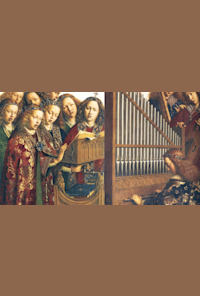

Sacrae Cantiones
Deliti
Polska Opera Królewska (2023)
Igranje v glavni vlogi:
Informacije umetniške organizacije (Preverjeno s strani Operabase)
Sacrae Cantiones by Gomółka, Szamotuły, Zieleński, Od (2023/2023), Kościół Świętej Trójcy, Warsaw, Poland
Izberite DeloMelodie na Psałterz Polski, Gomółka
Producent
Igralska zasedba
Soloist
Ansambel
Program
12
Sacrae Cantiones
Melodie na Psałterz Polski, Gomółka
Psalm XLVb Serce mi każe śpiewać Panu swemu; Psalm CXL Broń mię, mój; Panie, od ludzi złośliwych; Psalm XI Panu ja ufam; Psalm XXX Będę Cię wielbił, mój Panie
Več o glasbenem delu
- Melodie na Psałterz Polski
- Alleluja, chwalcie pana boga" (Hallelujah, praise the Lord)
- Modlitwa, gdy dziatki spac ida, "Juz sie zmierzcha" (A Prayer When the Children Go to Sleep)
- Ach, mój niebieski Panie
- Kryste dniu naszej światłości (O Christ, Day of Our Light)
- Deus firmavit orbem terrae
- Viderunt omnes fines terrae
- Laetentur caeli
- Per signum crucis
- Haec Dies
- O gloriosa Domina
- Magnificat a 12

